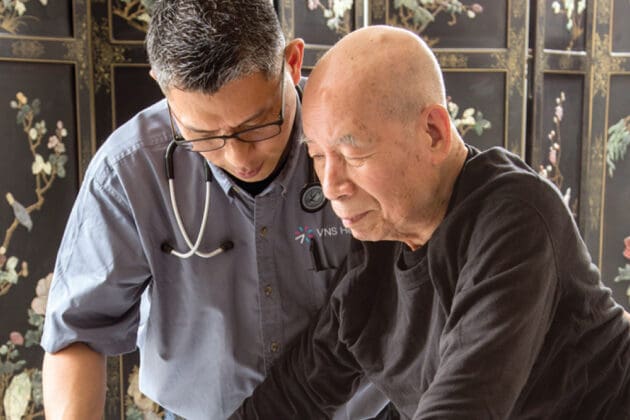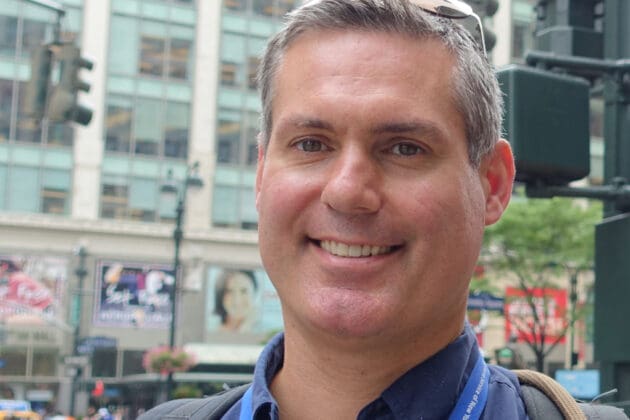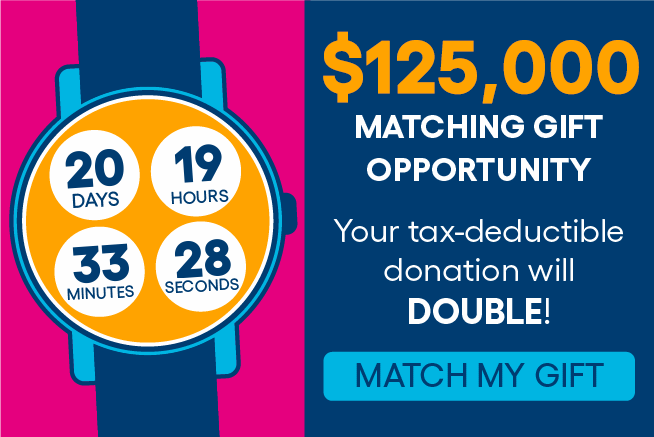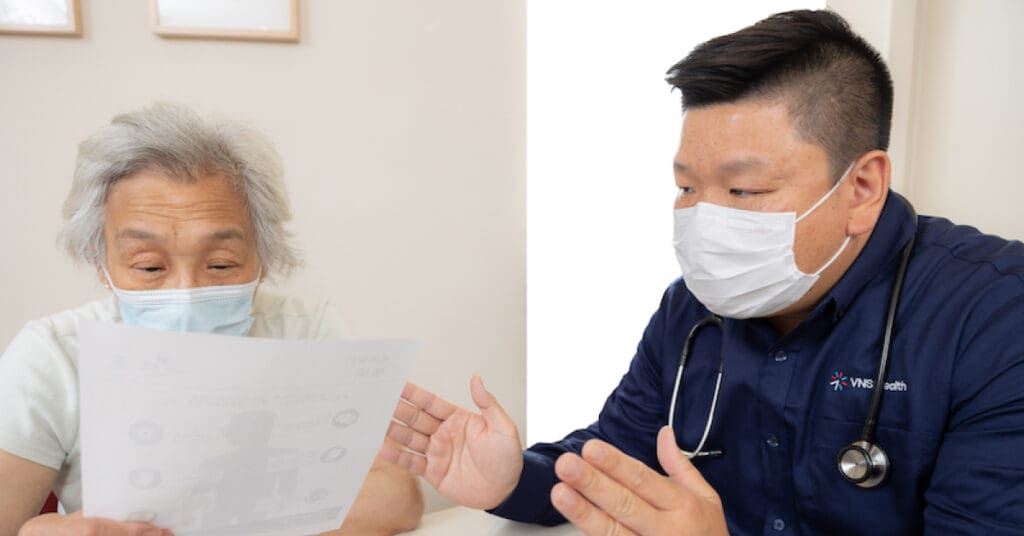
For VNS Health Nurse Michelle Fanizzi, who’s lived on Staten Island all her life, delivering home health care means connecting people with much more than medical care. Besides linking her patients with neighborhood doctors and local pharmacies or drug-delivery services and connecting people suffering from depression with community mental health services, she also connects patients and family caregivers with information on how to carry out “doctor’s orders” at home. And if they ask, she can even give patients insights into nearby transportation services, community centers and other locales to help them form deeper ties with their community.
Michelle resides in the tight-knight Rosewood section of Staten Island, where, as she says, everyone knows everyone. “When someone moves here and doesn’t know anybody, these connections can help them feel more comfortable, can give them a sense of hope and belonging,” she says.
Connecting people to their community
Even if they are not working in the communities where they were born and raised, home healthcare workers specialize in knowing their service areas and drawing on that knowledge to make connections — connections that bring comfort, elevate people’s quality of life, and sustain better health at home.
At the same time, like Michelle, many of our nurses, social workers and rehabilitative therapists do live right in the communities where they work. They traverse the same streets as their patients. They know local doctors and pharmacies, and they also know what bodegas have good produce, what streets might form a good stretch of sidewalk to get some exercise, and what parks to recommend to home health aides looking to take their client on an outing. In addition, home health care team members can connect seniors to Meals on Wheels, people with vision impairments to audiobooks and other services, and those with mental health needs to community-based solutions.
Ashley Eustache is a VNS Health Home Care nurse who’s lived and worked in both the Bronx and Westchester County. She knows those communities and can help patients find pharmacies closest to their house as well as connect them with doctors for follow-up care that might be easy enough for them to get to. When she was living and working in the Bronx, she also understood the gaps in care her neighbors often faced and was committed to expanding their access to health care however she could.
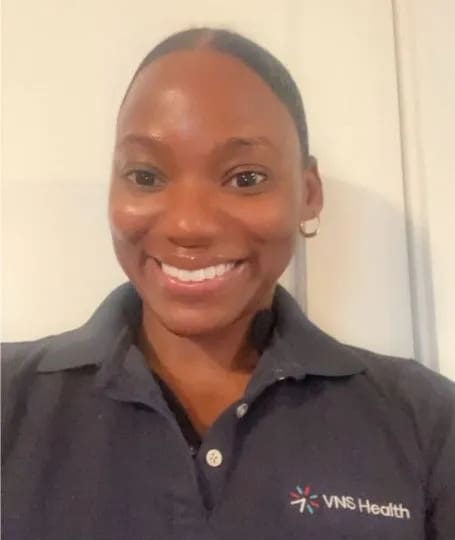
Nurse Xiang Jin uses language and culture to create a bridge to better health and deeper community involvement for his patients, who are members of VNS Health’s Chinatown NNORC (Neighborhood Naturally Occurring Retirement Community). He provides them with health assessments, education, advocacy, and a link to community resources. “I love working with this community,” he says. “I speak Mandarin and Cantonese and I understand the culture, so it’s rewarding to help elderly clients with their unique needs.” As an added personal bonus, he grabs a meal at a favorite Chinatown restaurant whenever his schedule allows.
The Chinatown NNORC itself is a great example of how home health care organizations can nurture life-enriching community connections for vulnerable seniors. Through its physical headquarters in the heart of Chinatown and through associated services delivered in members’ homes, the NNORC is able to connect seniors living in Chinatown — who are often isolated by chronic health conditions, a language barrier, and the mobility challenges of living in walk-up apartments — to an entire social and well-being support system right in their neighborhood. Seniors can visit or be connected remotely to the Chinatown NNORC for a flu shot, a class on financial literacy, help with translation or entitlements, or enjoyable socializing. During the Covid pandemic, the NORC even connected elders via a video link to a program of beautiful music they could listen to in their homes.
Connecting with an interdisciplinary team for holistic care
Depending on the nature of the visit that’s been scheduled, home health care patients might receive care from a nurse, a physical or occupational therapist, a social worker or a home health aide. Even though the care provider is often arriving alone, there is actually a whole close-knit team that’s aligned and working together — and that’s in constant communication with each other.
“We are strongly communicating together all the time,” says Michelle of her own interdisciplinary care team. Before she makes her first home visit, she has been thoroughly briefed on the patient’s health and home life by their case manager. “When I first go into a patient’s home, I can help them feel comfortable right away because I already know so much about them,” she says — adding that she, in turn, communicates her findings with the rest of the team.
This team approach delivers great peace of mind to patients. “Think of a patient with a wound they think may never heal, and they are seeing different care team members — it could be discouraging,” Michelle says. “Once they see that each of you knows so much about them, though, they feel much better. They begin to feel optimistic, knowing there’s a strong team, almost like a family, communicating all the time and making sure they’re all on the same page.”
Interdisciplinary hospice teams tend to be particularly close, with end-of-life care demanding an especially holistic, patient-centered effort. Sometimes this means visiting a patient together, to support one another as well as the patient and their family. VNS Health Hospice nurse Dania Davidson says that for patients and families who are unsure about the benefits of hospice, she will typically make a home visit together with her team’s social worker and spiritual care counselor in order to show the range of supports that an interdisciplinary team offers. Dania recalls how, one evening when a patient and family she was caring for were in particular distress, she called the spiritual care counselor at the last minute and asked him to join the visit, which he gladly did.
Connecting to better health — and a better life
Those of us who work in home health care know that attending to someone’s health means attending to their life as a whole. Everything about their home and community impacts them — and their health — from what’s in the refrigerator to the lighting and throw rugs in their bedroom; from the pharmacy where they get their medications to the social resources they have in the community; from the family and friends who support them day in and day out, to the professional care team who is connected to them and to each other.
“I think home care bridges the gap between what a patient tells a doctor and what may be going on at home, whether or not the patient is even aware of it,” says Ashley. “They might not think to tell the doctors about certain things they’re doing that may be destructive to their health, whether it’s what they eat, how they take their medication, or how they are tending to a wound.”
Dania, who used to practice in a busy Bronx hospital, cherishes the ability to connect her care to a patient’s full life. “I love seeing patients in their home,” she says. “You can tell when someone needs more support, even without them saying it. You don’t get to see and hear their backstory in the hospital.”
Michelle can still see the impact of her community-connected care on one patient, long after his wounds have healed. She sees him every Sunday at her church — one more example of the connections she is so good at making. “He had no friends or family when he moved here from out of state, and he was interested in joining a church,” she says. “I answered his questions, and was happy to be able to help.”

